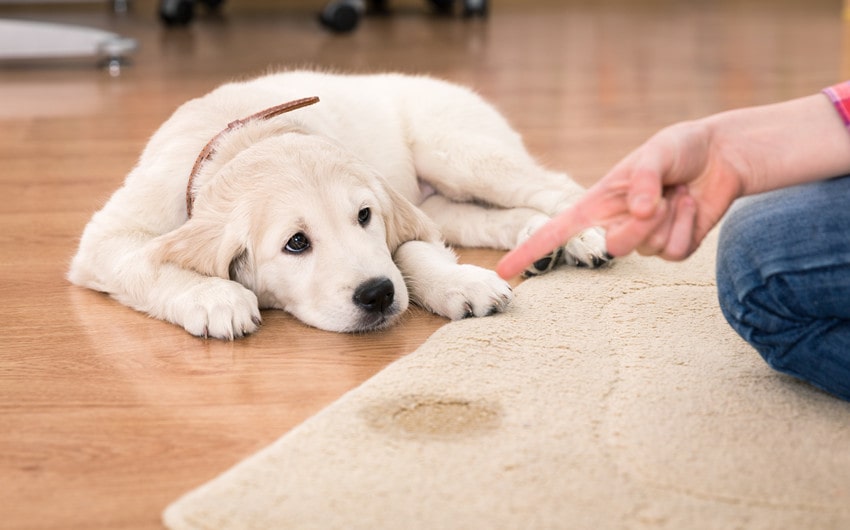Introduction

Image: www.thinkpresently.com
Is your dog’s urinary behavior driving you up the wall? Does a fresh puddle on the rug send shivers down your spine? You’re not alone. Many dog owners struggle with housebreaking their furry friends, and accidents on the rug can be particularly frustrating and unhygienic. However, before you lose your patience or consider extreme measures, it’s crucial to understand the reasons behind your dog’s bathroom mishaps and find effective solutions to address them. In this comprehensive guide, we will delve into the world of canine potty habits and provide you with proven techniques to keep your dog from peeing on your rug.
1. Rule Out Medical Issues:
The first and most important step in addressing inappropriate urination is to rule out any underlying medical conditions that may be contributing to the problem. Conditions such as urinary tract infections, hormonal imbalances, or anatomical abnormalities can cause dogs to experience difficulty controlling their bladder or have an increased urgency to urinate. Consult your veterinarian and have your dog examined to ensure that their health is not the underlying cause of the problem. If medical issues are ruled out, the following steps can help you identify and resolve the behavioral reasons behind your dog’s rug-peeing habits.
2. Housebreaking and Training:
Like toddlers learning to use the potty, dogs also need to be properly trained to understand where and when it’s appropriate to relieve themselves indoors. Regular housebreaking and housetraining are essential, regardless of your dog’s age. Establish a designated area for bathroom breaks and take your dog to that spot frequently, especially after meals, naps, or playtime. Consistent reinforcement, such as praise or treats, when your dog goes outside is crucial to help them learn the desired behavior.
3. Addressing Anxiety and Fear:
In some cases, urination on rugs can be a sign of anxiety or fear. Anxious dogs may urinate as a coping mechanism when they feel stressed, threatened, or overwhelmed. Identify and remove any potential triggers that may be causing your dog distress, such as loud noises, strangers, or other animals. Create a calm and safe environment for your dog and consider using calming aids like pheromone diffusers or anxiety vests.

Image: hasmaworld.blogspot.com
4. The Power of Cleanliness:
Dogs have a keen sense of smell, and the remnants of previous accidents can act as cues for repeat marking. Thoroughly clean any areas where your dog has urinated with an enzymatic cleaner that breaks down urine components. Regularly wash rugs and other soft floor coverings to remove any lingering odors that might trigger your dog’s urge to go.
5. Behavior Modification Techniques:
If the above steps don’t seem to be effective, don’t despair. There are several behavior modification techniques that have proven successful in curbing inappropriate urination. One method is positive reinforcement, where you immediately reward your dog for desired behaviors. Another option is negative reinforcement, where you remove something unpleasant (like taking away a toy) after the unwanted behavior occurs. However, do not under any circumstances resort to punishment, as this can worsen the problem in the long run.
6. Deterrents and Repellents:
While not a permanent solution, deterrents can help discourage your dog from peeing on rugs. Try using a commercial dog repellent spray or placing objects with strong odors that dogs dislike, such as citrus peels or coffee grounds, around the area you want to protect. You can also try covering rugs with a material that makes them uncomfortable to urinate on, like aluminum foil or upside-down carpet tape.
How To Keep A Dog From Peeing On A Rug
Conclusion:
Keeping your dog from peeing on your rug requires a multifaceted approach, blending medical evaluation, housebreaking, anxiety management, cleanliness, behavior modification, and, possibly, deterrents. Understanding the underlying reasons why your dog is exhibiting this behavior is critical to finding an effective solution. By implementing the methods outlined in this guide and remaining patient with your furry friend, you can create a more harmonious and hygienic home environment for both of you. Remember to consult with your veterinarian for personalized advice and address any medical issues that may be contributing to the problem.